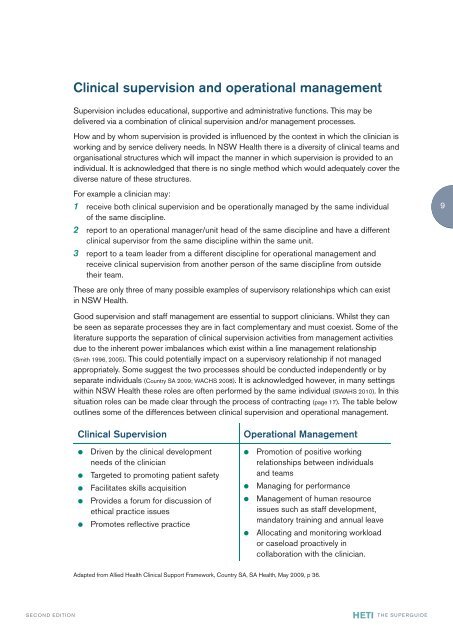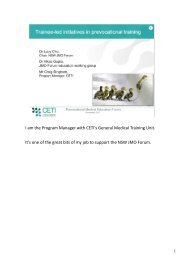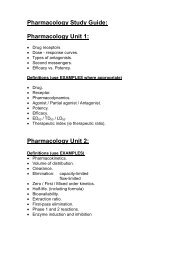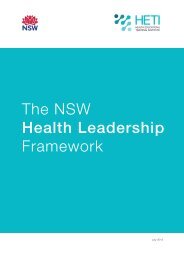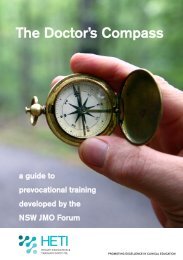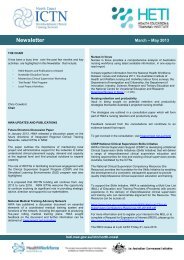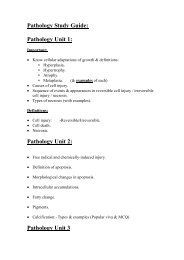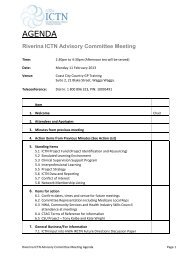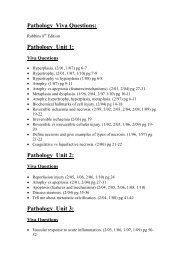a handbook for supervising allied health professionals - HETI - NSW ...
a handbook for supervising allied health professionals - HETI - NSW ...
a handbook for supervising allied health professionals - HETI - NSW ...
You also want an ePaper? Increase the reach of your titles
YUMPU automatically turns print PDFs into web optimized ePapers that Google loves.
Clinical supervision and operational management<br />
Supervision includes educational, supportive and administrative functions. This may be<br />
delivered via a combination of clinical supervision and/or management processes.<br />
Clinical Supervision<br />
Operational Management<br />
• Driven by the clinical development<br />
• Promotion of positive working<br />
needs of the clinician<br />
relationships between individuals<br />
• Targeted to promoting patient safety and teams<br />
• Facilitates skills acquisition<br />
• Managing <strong>for</strong> per<strong>for</strong>mance<br />
• Provides a <strong>for</strong>um <strong>for</strong> discussion of<br />
• Management of human resource<br />
ethical practice issues<br />
• Promotes reflective practice<br />
• Allocating and monitoring workload<br />
or caseload proactively in<br />
collaboration with the clinician.<br />
Adapted from Allied Health Clinical Support Framework, Country SA, SA Health, May 2009, p 36.<br />
SECOND EDITION<br />
How and by whom supervision is provided is influenced by the context in which the clinician is<br />
working and by service delivery needs. In <strong>NSW</strong> Health there is a diversity of clinical teams and<br />
organisational structures which will impact the manner in which supervision is provided to an<br />
individual. It is acknowledged that there is no single method which would adequately cover the<br />
diverse nature of these structures.<br />
For example a clinician may:<br />
1 receive both clinical supervision and be operationally managed by the same individual<br />
of the same discipline.<br />
2 report to an operational manager/unit head of the same discipline and have a different<br />
clinical supervisor from the same discipline within the same unit.<br />
3 report to a team leader from a different discipline <strong>for</strong> operational management and<br />
receive clinical supervision from another person of the same discipline from outside<br />
their team.<br />
These are only three of many possible examples of supervisory relationships which can exist<br />
in <strong>NSW</strong> Health.<br />
Good supervision and staff management are essential to support clinicians. Whilst they can<br />
be seen as separate processes they are in fact complementary and must coexist. Some of the<br />
literature supports the separation of clinical supervision activities from management activities<br />
due to the inherent power imbalances which exist within a line management relationship<br />
(Smith 1996, 2005). This could potentially impact on a supervisory relationship if not managed<br />
appropriately. Some suggest the two processes should be conducted independently or by<br />
separate individuals (Country SA 2009; WACHS 2008). It is acknowledged however, in many settings<br />
within <strong>NSW</strong> Health these roles are often per<strong>for</strong>med by the same individual (SWAHS 2010). In this<br />
situation roles can be made clear through the process of contracting (page 17). The table below<br />
outlines some of the differences between clinical supervision and operational management.<br />
issues such as staff development,<br />
mandatory training and annual leave<br />
<strong>HETI</strong><br />
THE SUPERGUIDE<br />
9


